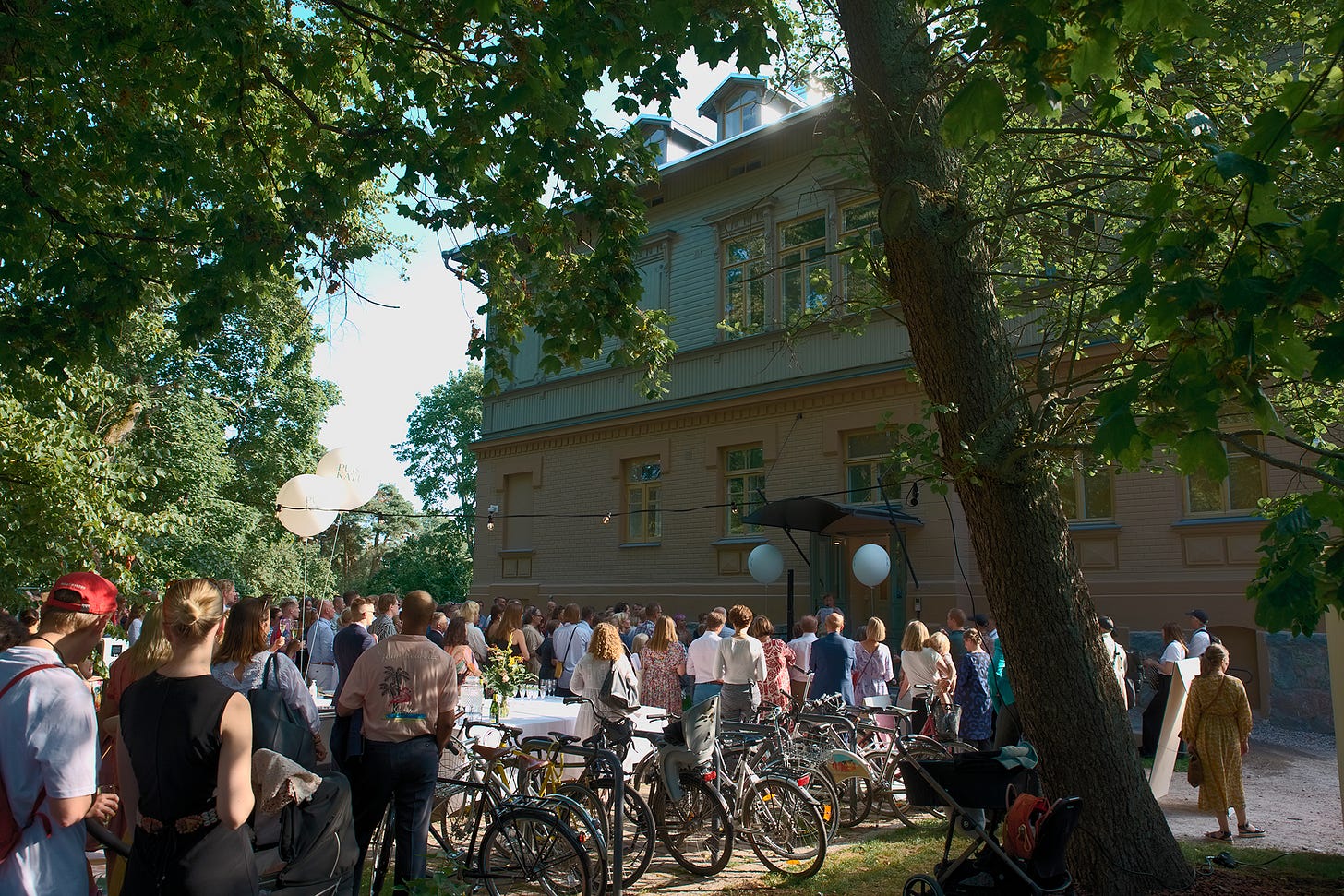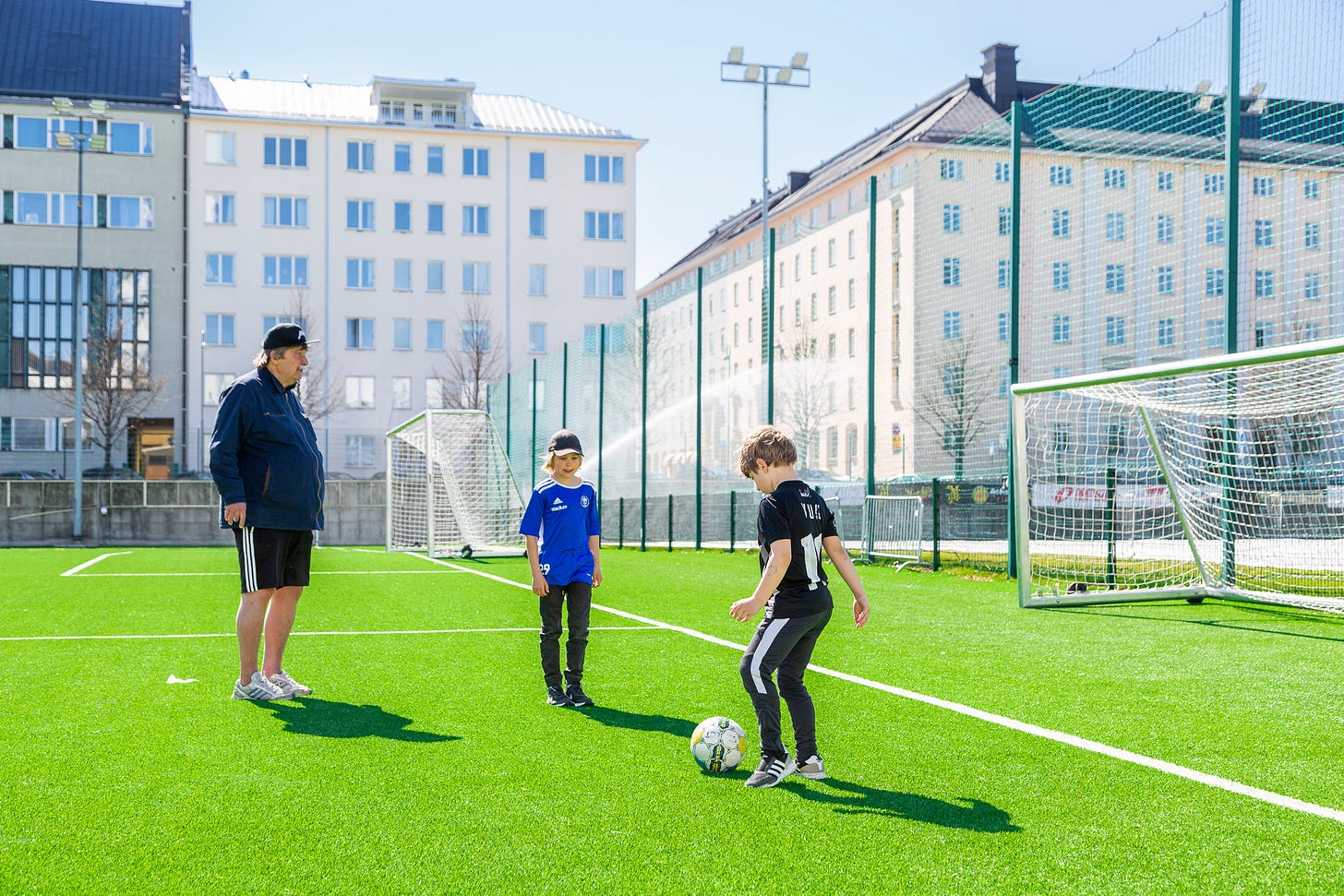A Space for Science and Hope
The Puistokatu 4 community in Helsinki explores convivencia as a guiding principle for climate researchers and activists.
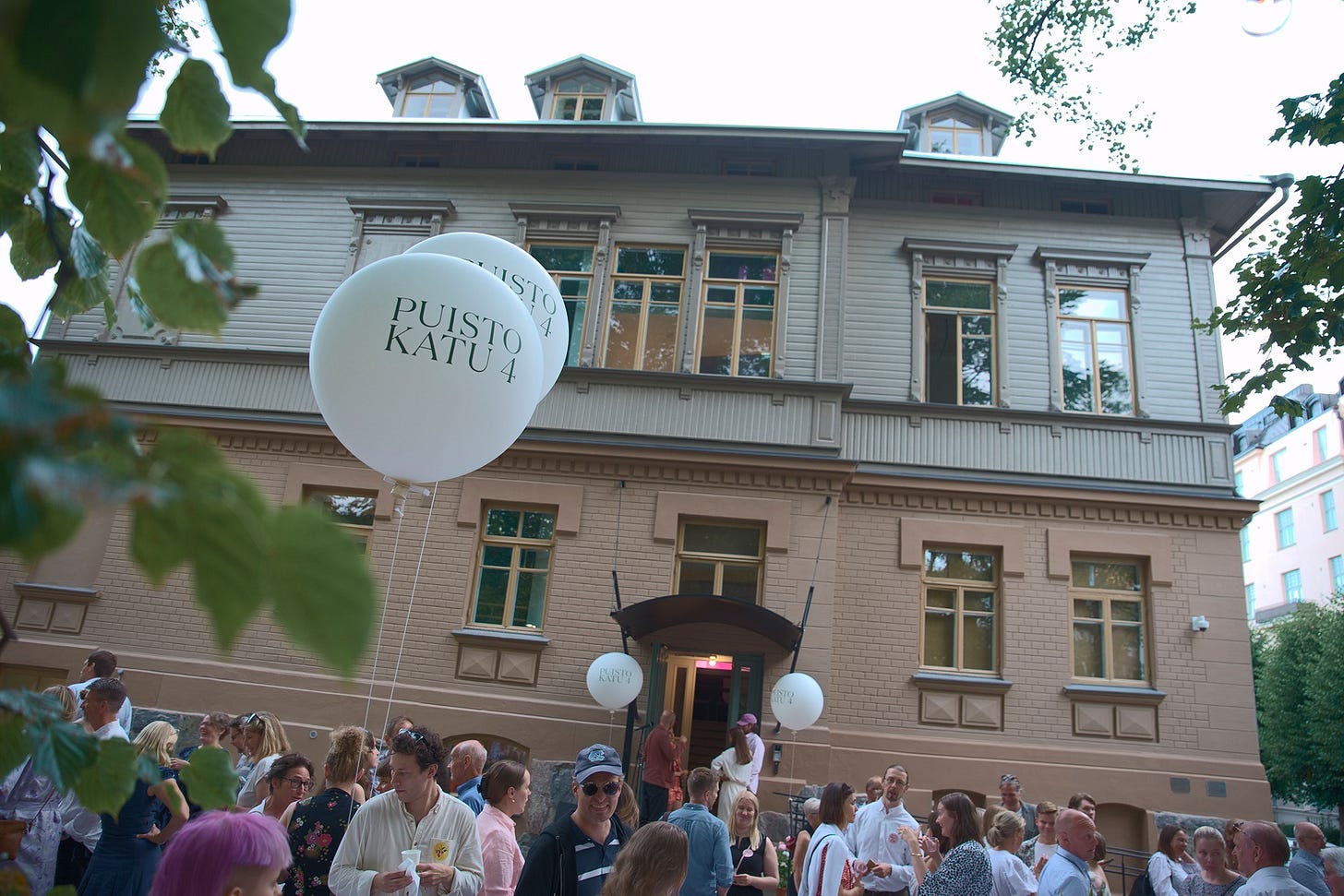
Puistokatu 4 (Park Street 4) is a 19th century wooden villa in Helsinki’s Ullanlinna neighborhood. During its history, the villa has been the home of Finland’s most famous actor, a private school and an exhibition space for the Museum of Finnish Architecture. In 2020, after standing empty for years, the Tiina and Antti Herlin Foundation, a private philanthropy focused on climate change, bought the building and restored it with care into Puistokatu 4 - A Space for Science and Hope.
Puistokatu 4 hosts restaurant Elm, meeting spaces and, most importantly, temporary residences for 64 researchers and agents on climate change and sustainability. The 46 researchers who work in the building are all PhD-level or above and represent 34 scientific disciplines from anthropology and political ecology to business and social work. The researchers are affiliated with 20 different universities or research organizations.
I have been fortunate to be a member of their advisory group from the very beginning, taking part in a few meetings a year to reflect on programming and community building. I have been in awe of the ambition to combine warmth and scientific excellence, which I would love to see more in innovation spaces and narratives. We had talked about the idea of convivencia in our meetings and I was honored to give an public talk (in Finnish) on my research on it at Puistokatu 4 a year ago.
I was delighted to hear last month that Puistokatu 4 has adopted the idea of convivencia as one of its development areas for 2025. I talked to Executive Director Minttu Jaakkola and one of the researchers, PhD Researcher Henri Nevalainen from the University of Tampere about friction and coexistence.
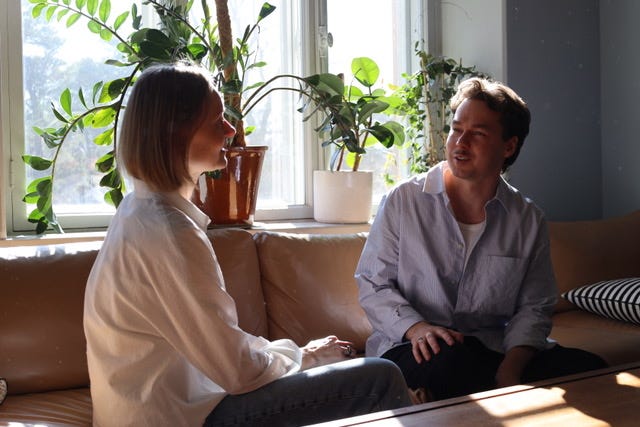
Tommi: Minttu, could you tell a bit about the origins of this community and why you thought that the idea of convivencia was relevant to Puistokatu 4?
Minttu: When we founded this with [Tiina and Antti Herlin Foundation’s Development Director] Anna [Herlin], our starting point was that ecological crisis touches us all but the discussion around it is very siloed. We have the business sector on one end and the activists on the other. They all have their own ways to discuss and think about it and we should try to weave these worlds together.
Our idea with Puistokatu 4 is not one of conversion. It is really fascinating to see how the climate crisis and biodiversity loss touches so many people and how differently and for different reasons they are awakened by it. We are interested in the idea of convivencia as we know that when people come into contact with people who think very differently about reasons and solutions, that might raise negative feelings.
In our community and events, we have those who believe that economic growth must continue as the only way to finance environmental solutions. But we also have those who see capitalism as the root cause of the crisis and believe solutions cannot be found within the current market economy.
Over the past two years, we have engaged with all these groups, though often not in the same events. Now, we aim to mix these perspectives more. For example, we are experimenting with dialogues between young environmental activists and corporate leaders from some of Finland’s largest companies. Friction is inevitable.
I want to be clear that this dialogue experiment is not our entire focus. Through our community and our events, we want to keep being a platform for conversations on issues different groups are interested in. One successful concept has been after work drinks with highly different speakers on their environmental awakening. These speakers have brought their own audiences, some questioning all animal products and some with luxury leather handbags.
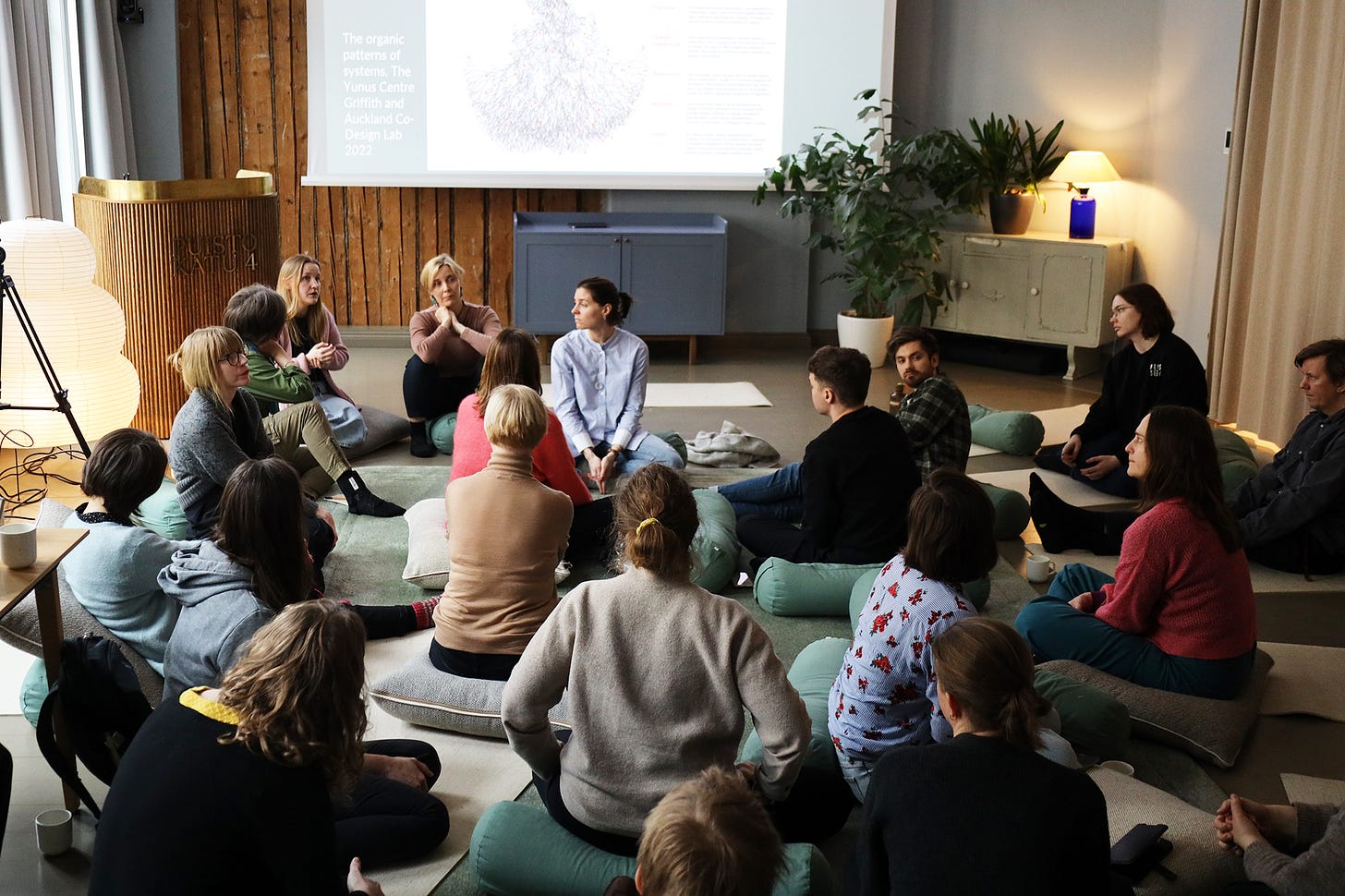
Tommi: Henri, you are one of the researchers here. What was your reason to apply for a residence here?
Henri: I am a social psychologist. During my studies I focused a lot on the experience of threat and especially threat perceptions caused by climate change. I was interested in how threat is linked to the development of national identity. I also did some research on COVID-19. So existential threats. Then I ended up as a research assistant in a research project that explored the challenges and dilemmas related to narrating problematic interaction situations.
Once I graduated, I wondered how I could combine these two interests. I started to remember situations where acting in an environmentally friendly way or even suggesting more ecological ways to act had felt somewhat difficult in certain contexts—and I thought that the key issue was primarily a face-threatening situation. For example, ordering a vegetarian option in a masculine environment may raise concerns even before placing the order. How will I be treated, and will I have to explain the choice I made? Additionally, I realized that sharing such abstract threatening experiences can be very challenging, making it difficult to address them and prevent similar situations in the future.
The reason why I applied was that I was still exploring that line of thought. To be honest, I think I realized why I am here only after six months. I understood that by understanding these experiences of threat, the researchers here could find a way to voice their opinions better.
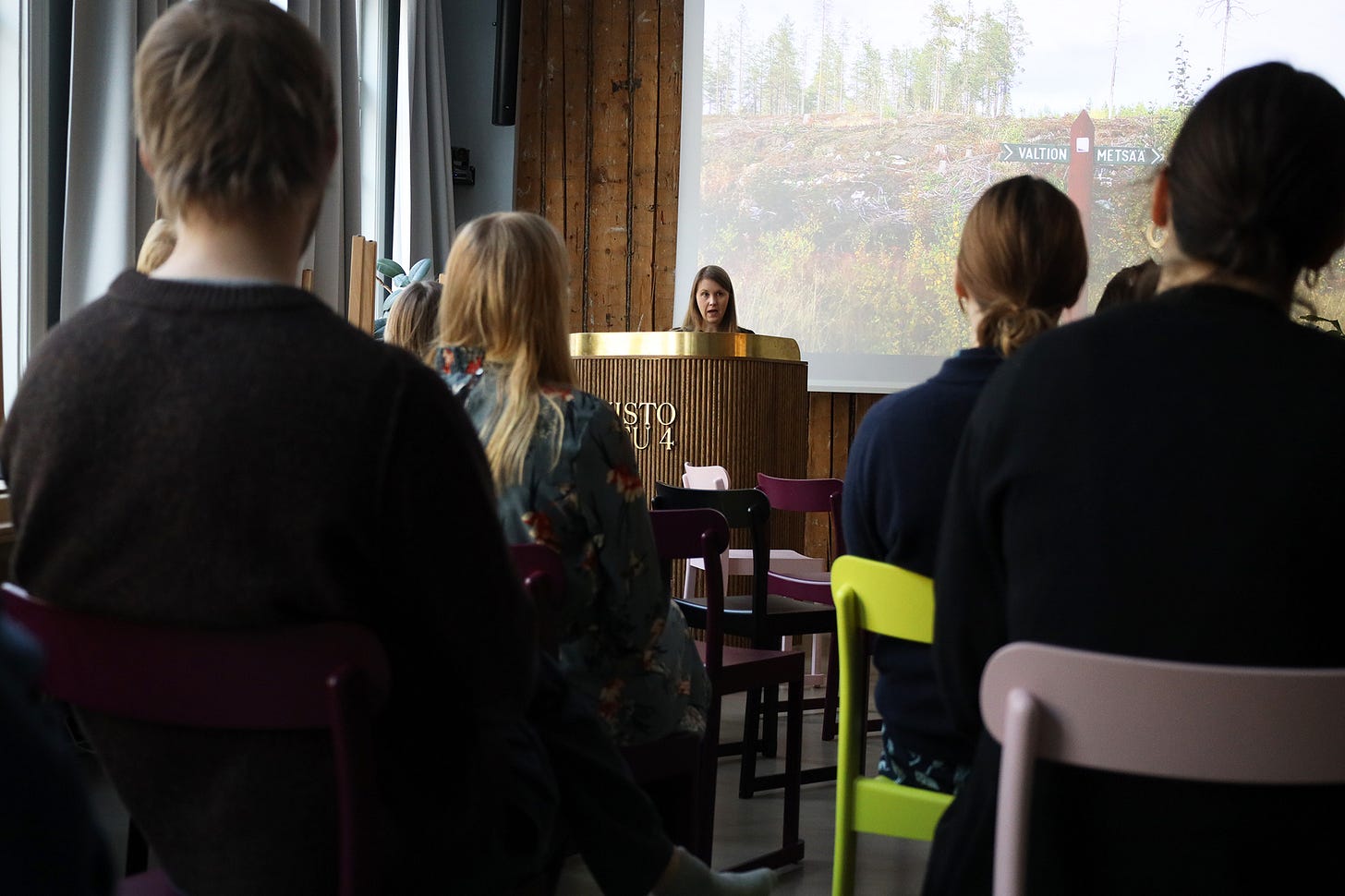
Tommi: That is so fascinating. I have been coming here for years and I was still going through a lot of things in my head as I was walking here. Like this is a research community and I come here as a consultant talking about theory. And this is a climate change community and I flew here last week. I found myself making self-deprecating jokes about being a consultant as a way to calm my nerves.
Henri: That experience of threat is in some way present in all interactions. This experience of threat comes back to the theory of Henri Tajfel and John Turner on social identity and personal identity. In short, the theory assumes that people have two types of identities. We have a personal identity, which differentiates us from others. And then we have a social identity, which is the groups I belong to. I advocate for greater awareness of social identities.
If I think of myself in this community, I think I was in some way seeking validation. Being here has helped me in verbalizing this. By understanding experiences of threat we could create safer spaces for researchers and ordinary citizens to get their voice heard. I find myself not questioning my place anymore. So far, in my research, I have focused on the interactional resources related to narrating threatening experiences at a general level. However, my time at Puistokatu has increasingly guided my research interests towards focusing, for example in my future post-doc research, on the threatening experiences of environmental researchers and activists.
Minttu: I have wanted this to be a place where people do not need to demonstrate or prove things to others. That we are all here because we want to understand and act. That you do not need to feel shamed for having flown here. I hope Puistokatu 4 is a place where we cherish incompleteness. We are all in progress and I feel like that in some way that helps us to strive for that one goal, which is good life within planetary boundaries. And the interesting question is: why is change so difficult, and what are the norms that do not allow transformation? I have worked in so many settings where I feel like I cannot be myself or I am not heard.
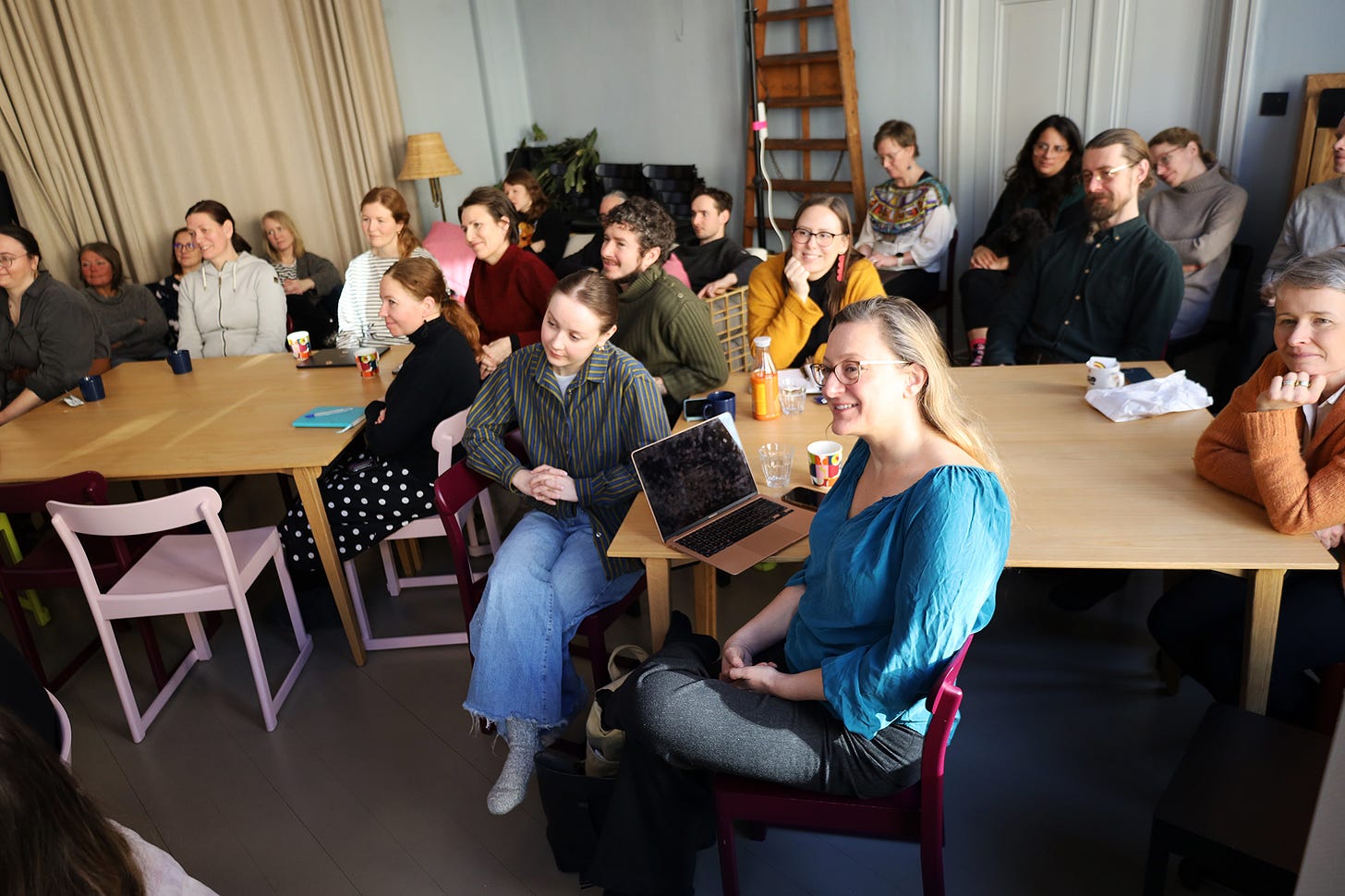
Tommi: The feedback from this community is really positive on belonging. That is a major achievement in a multi-disciplinary community built around an emotional and often divisive theme, like climate change. What are the practices here for creating that?
Minttu: We have these boards on the walls, which have the principles we live out. We talk about them a lot. They have really helped in building this community as people really feel like this is the atmosphere here. We created them in the very beginning. We thought values were too vague and we wanted to have something that helps in being together and being in the world.
The first one is that we are connected to each other. That means to each other here in this building, to other species, to previous and future generations and the entire planet. That is a crosscutting principle that we all need to respect. The second one is hearing the other person’s reality. It’s remembering that we come from highly different backgrounds and we need to stop and recognize that. We have the safe space principle, which encourages us to pause at our prejudice before taking action. And finally, we have the principle of cherishing incompleteness and remembering that we are all learning and that no scientific result is the final truth.
I think it is easier here to gain recognition and feel heard as we are not in the same department at the university competing for resources and acclaim. In this community we can explore ideas without losing face. Two of our researchers came to me and said that here they dare not to know everything as there are so many people who know a lot about something and it is clear that we need each other’s expertise. Here people do not feel like they need to agree while we have a strong willingness to be part of this same community. The vision gives a clear common denominator, which is not restricting.
Henri: I talked about social identities. I do feel that more or less everyone here feels that they have a strong Puistokatu 4 identity. You identify as part of this community even on the tram on the way here.
Puistokatu 4 Community’s Guiding Principles
We are all connected to each other.
Hear the other person’s reality.
Cherish incompleteness.
Tommi: What would you say are the building blocks of social identity here in Puistokatu 4?
Henri: Of course this house alone is a massive artifact for developing an identity. I also think that the boards with principles and the way they are actively and explicitly brought up makes the community come alive. We talk about them over morning coffee. There is also that shared mission. I think also the independence, that we are not part of joint research projects, allows us to join this community as full selves.
If I compare myself to how I am at the university, I am more reserved there. Here I dare to admit to myself that this might not be my most productive day. I dare to end the day early if it is not working. When I am at the university, I tend to push through the entire day even when the result would not be that great.
Tommi: Could it be that for outstanding scientific work in a divisive and sensitive subject you need both sorts of spaces?
Minttu: The important thing here is that you cannot apply to be a research member if you do not have an affiliation with a research organization. So all of our members also have that other community. That gives a shared starting point.
Henri: One of the important things for me here is our Gracious Writing Group on Wednesdays. We gather around the table, tell others what we are working on today, wish each other a great working session, write for 45 minutes, hold a small break and write for another 45 minutes. We conclude by sharing what we achieved.
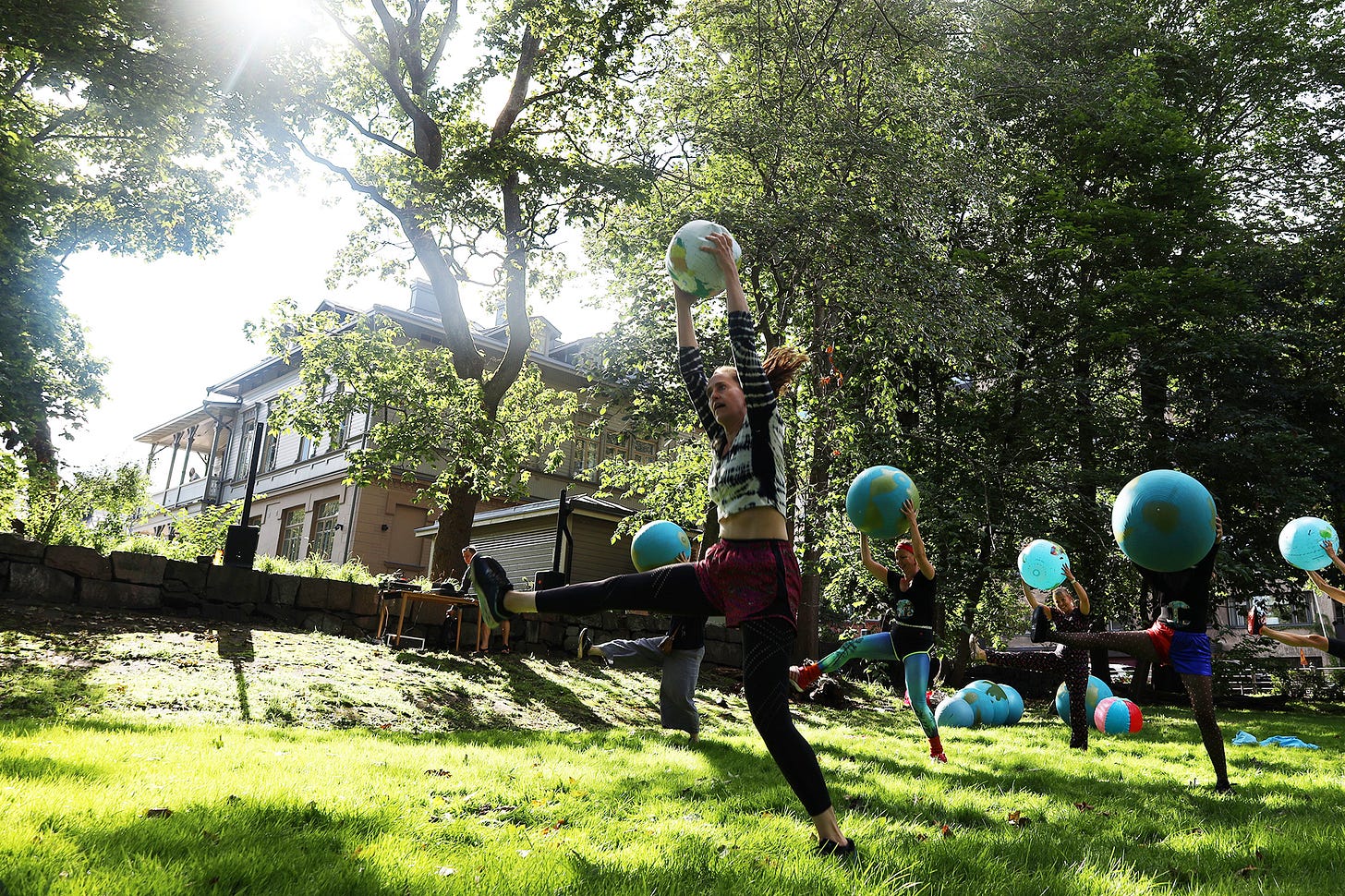
Tommi: What is the value of this to you as a researcher?
Henri: There’s of course the social pressure. But most importantly, it helps me organize my work week. I prepare for writing throughout the week by making notes and I can trust that I will make progress when we sit down together. On Wednesday, I can just write for 45 minutes and listen to others writing.
Tommi: Any last thoughts?
Minttu: I would hope that we could approach good life within planetary boundaries without shame of where we are, without shaming others where they are. At the same time, guilt is not only a bad thing. Guilt demonstrates that you are experiencing a conflict caused by facts and your values and you should nurture that as it can lead to an awakening and change.
Teaser: Hobby work inspired by Helsinki to be published
I am very excited that after more than a year of work, we will be releasing some of the research I have been doing on the power of hobbies in the next few weeks. With our team, supported by the amazing The Gambrell Foundation, we have been exploring what would it mean if the City of Charlotte in North Carolina would take inspiration from Helsinki as set a goal that every child would have at least one hobby.
I am heading to Charlotte this week to meet some potential partners to take this work into action.
In this Q&A with Sally Gambrell Bridgford, we talked about my own journey into the wonderful world of hobbies. In this earlier really thoughtful piece, Charlotte-Mecklenburg Schools Chief of Staff, Dr Ingrid W. Medlock talked about her takeaways from a trip to Finland I had the pleasure to curate with the foundation and Jaana Woll.





